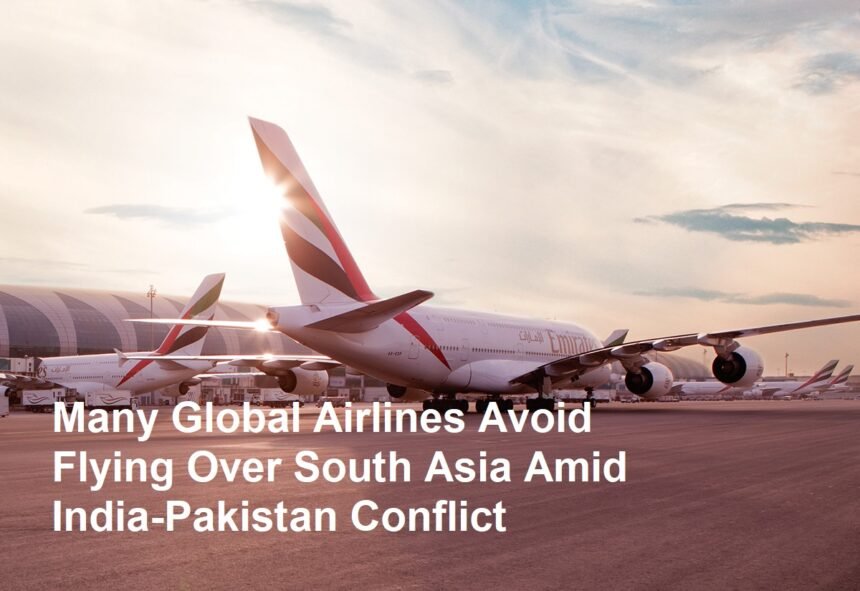The ongoing conflict between India and Pakistan has led to significant disruptions in international air travel, with numerous global airlines opting to avoid flying over South Asian airspace. This decision reflects growing safety concerns and the complex geopolitical tensions in the region, impacting flight routes, travel times, and airline operations worldwide.
Background of the Conflict
India and Pakistan, two nuclear-armed neighbors with a long history of territorial disputes, particularly over the Kashmir region, have recently experienced heightened military confrontations. These escalations have raised fears of broader conflict, prompting airlines and aviation authorities to reassess the safety of flight paths crossing the region.
Airlines’ Response to the Conflict
In response to the escalating tensions and potential risks, many international airlines have chosen to reroute their flights to avoid South Asian airspace altogether. This includes major carriers from Europe, North America, and other parts of Asia, which have adjusted their routes to circumvent the airspace over India and Pakistan.
The decision to avoid flying over South Asia is primarily driven by concerns over the safety of passengers and crew. The risk of military engagements, missile launches, or accidental incidents in contested airspace has made airlines cautious. Aviation authorities have also issued advisories recommending alternative routes to minimize exposure to potential conflict zones.
Impact on Flight Routes and Operations
Rerouting flights around South Asia has led to longer flight times and increased fuel consumption for many airlines. Flights that would typically take more direct paths over the region now have to take detours, often flying over the Middle East, Central Asia, or other neighboring regions.
These changes have operational and financial implications for airlines, including higher fuel costs, increased crew hours, and scheduling challenges. Passengers may also experience longer travel times and potential delays as a result of these adjustments.
Economic and Geopolitical Implications
The avoidance of South Asian airspace by global airlines highlights the broader economic and geopolitical consequences of the India-Pakistan conflict. The disruption of air travel affects not only airlines but also trade, tourism, and business connectivity in the region.
Countries in South Asia rely heavily on air transport for economic activities, and the conflict-induced disruptions could hamper regional economic growth. Additionally, the rerouting of flights may shift air traffic patterns, benefiting some countries while disadvantaging others.
Safety and Security Considerations
The primary concern driving airlines’ decisions is the safety and security of flights. The volatile situation between India and Pakistan, both possessing advanced military capabilities, creates an unpredictable environment for civil aviation.
International aviation organizations, including the International Civil Aviation Organization (ICAO), have been monitoring the situation closely and coordinating with national aviation authorities to ensure the safety of air travel. Airlines are required to comply with advisories and adjust their operations accordingly.
Future Outlook
The duration of these flight route changes depends largely on the evolution of the India-Pakistan conflict. If tensions de-escalate and stability returns to the region, airlines may gradually resume normal flight paths over South Asia.
However, if the conflict persists or intensifies, the avoidance of South Asian airspace by global carriers could become a long-term reality, reshaping international aviation routes and strategies.
Conclusion
The decision by many global airlines to avoid flying over South Asia amid the India-Pakistan conflict underscores the far-reaching impact of geopolitical tensions on international air travel. Safety concerns have prompted significant rerouting of flights, affecting airline operations, passenger experiences, and regional economies.
As the situation remains fluid, airlines and aviation authorities continue to prioritize safety while adapting to the challenges posed by the conflict. The developments in South Asia serve as a reminder of how geopolitical conflicts can disrupt global connectivity and necessitate swift operational responses in the aviation industry.









